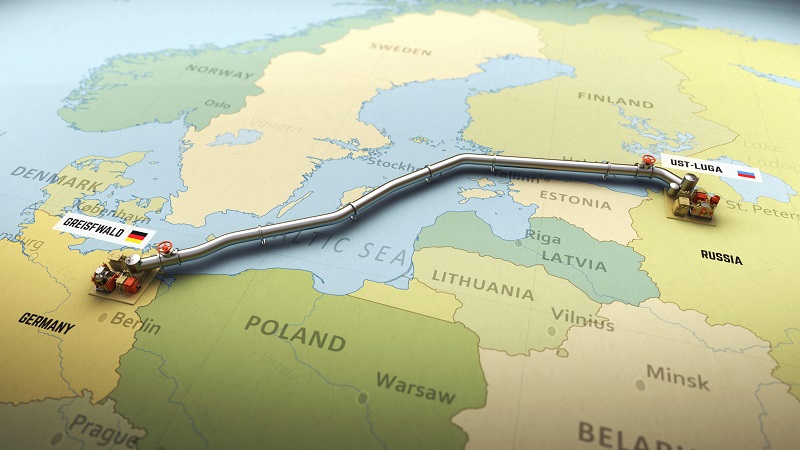Russia’s energy war against Europe made Norway one of the most important gas suppliers in the region, expected to remain in this role for years to come. In the aftermath of the Nord Stream gas pipeline explosions in the fall, energy security will be taken to the next level as the critical energy infrastructure is going be guarded by NATO forces.
| Price zone | Average exchange price | Change (previous week) |
| Estonia | 74,0 EUR/MWh | -38,2% |
| Latvia | 74,9 EUR/MWh | -37,4% |
| Lithuania | 74,9 EUR/MWh | -37,4% |
| Finland | 62,8 EUR/MWh | -46,7% |
The average price of electricity last week in Estonia was 74.0 €/MWh (-45.7 €/MWh compared to the previous week). The cheapest hour was at 4 a.m. in the early morning of Tuesday, 14 March, paying €2.48 per megawatt hour. The highest price for electricity had to be paid at 8 p.m in the evening of Wednesday, 15 March, with €199.3 per MWh.
Electricity prices continued to fall last week thanks to rainy weather and lower fuel prices. Finland’s Olkiluoto 3 nuclear reactor was started in test mode last Wednesday, making the price on the other side of the Gulf of Finland significantly cheaper.
Natural gas prices will probably remain at the current level
European gas markets are figuring out what the coming weeks will be like. The winter heating season seems to finally be replaced by a spring bringing warmth of up to 20 degrees to Central Europe, in the light of which traders have turned their eyes to the refilling of storage facilities. However, the latter is affected by various circumstances, from the ongoing strikes in France to lower-than-expected wind energy output late last week that raised energy prices in Germany. The impact of strikes in the European energy economy should not be underestimated. A ten-day work stoppage at the Dunkirk LNG terminal in northern France initially created a situation where LNG imports to Europe were 20% lower.
The average level of European gas reserves is 56%, being significantly higher compared to the same time in previous years. The Italian transmission system operator Snam predicts that by the beginning of April and the end of the heating season, the level will not fall below 50-55%. This means that half as much natural gas will have to be stored in the tanks than last summer. In a situation where the Nord Stream pipelines are broken and new LNG terminals are still being built, there would be no capacity for more.
Last week, a megawatt-hour of natural gas cost an average of €44.08 (-€0.1 compared to the previous week), whereas the price of summer contracts was at €43.08 and the price of winter contracts at €50.15 per MWh. Two years ago in April, a megawatt-hour of natural gas cost approximately €17, but last year it rose to €80 and fell below €50 only this February. According to Snam’s forecast, prices will remain at current levels, supported by the creation of new LNG receiving terminals. Three new regasification units are already operating in Germany, and the first one in Italy will start up in May. Snam predicts that gas consumption will gradually recover by 2024, when the initiatives launched to reduce consumption should end.
A hot summer can make Europe worry again
However, there is no reason to not worry, because Europe still has to deal with summer before the next heating season. Last year’s drought reduced the water levels of important transport rivers to such an extent that it was no longer possible to transport goods via them, causing a significant additional load on energy networks.
A repeat of a comparable heat wave this year would put European gas markets under significant pressure, as piped gas imports from Russia have dwindled to a minimum and we have to compete with Asian countries for liquefied natural gas. The risks are already in the air, because although the winter was favourable and milder than usual in terms of easing the energy crisis, it was also drier. Less rain and melting snow mean lower levels of hydro reservoirs and greater pressure on the energy system to use fossil energy sources.
Norway’s role as Europe’s energy supplier will remain at least until 2035, according to the forecast of the country’s transmission system operator Statnett. Norwegian natural gas has made a great contribution to Europe’s ability to cope without Russian natural gas, but electricity will continue to be exported primarily to Germany and Great Britain for at least another dozen years. Norway has become the largest individual supplier of gas to Europe. Exports were increased by 8% last year, reaching a total share of 40%. NATO forces are going to patrol the energy production facilities located in the near seas of Norway and the European Union, as the joint working group of the EU and NATO has already started.
Falling natural gas prices and quite good security of supply are encouraging the industrial sector to recover after a difficult winter. The consulting company Rystad predicts that Germany will consume 5% more natural gas this year than last year, in a total amount of 83 billion cubic meters, mainly due to the increase in industrial consumption. In Italy, however, consumption is predicted to remain at the same level of 68-70 billion cubic meters.
The technology needed for the green revolution should be made in Europe
According to the prevailing consensus in Europe, electrification based on renewable energy is the fastest way to carbon neutrality, but after the war initiated by Russia against Ukraine more than a year ago and the energy war against Europe, energy security has become a much more important topic than before. The European Commission is preparing a plan according to which at least 40% of the green technology needed in the Union would be produced in Europe.
It is part of Europe’s response to the United States and China handing out generous subsidies to the green energy sector that threaten to drive European companies out of the market. Wind turbines, heat pumps, solar panels, green hydrogen and carbon storage are considered key technologies in view of the 2050 carbon neutrality goal.
Last week, the price of CO2 fell to the lowest level of the last seven weeks, averaging at €90.7 per ton (-6.3 €/t). As most countries have distributed their annual free quotas to industry, market demand for quotas has decreased and the price has fallen. The European Commission plans to create a hydrogen bank to support renewable hydrogen production both in the EU and internationally. The first €800 million auction will be financed through the Innovation Fund to be launched this fall.
Eesti Energia’s plants in Narva were on the market last week with 290 MW. Eesti Power Plant’s Unit 5 will be under its annual maintenance until the beginning of April. All other steerable production facilities are available for the market.
The price of electricity is formed on the power exchange for each hour depending on the production capacity and consumer demand for that particular hour, as well as on transmission limitations between countries.
Olavi Miller, Market Analysis Strategist at Eesti Energia
The market overview has been prepared by Eesti Energia according to the best current knowledge. The information provided is based on public data. The market overview is presented as informative material and not as a promise, proposal or official forecast by Eesti Energia. Due to rapid changes in electricity market regulation, the market overview or the information contained therein is not final and may not correspond to future situations. Eesti Energia shall not be responsible for any costs or damages that may arise in connection with the use of the information provided.



